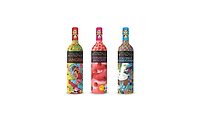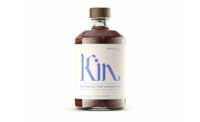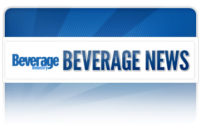Connecting with consumers through merchandising
Since 2008, the sports drink category has grown to include more than 650 UPCs, explained Susan Viamari, editor of Chicago-based SymphonyIRI Group’s Times & Trends, during the market research firm’s “Merchandising Trends” webinar in February. This product count included 12 sports drink brand launches that were so significant, she explained, that they qualified for SymphonyIRI’s New Product Pacesetter status in their respective launch years. Compounding the category’s growth, sports drinks also are competing for purchase in a market in which two-thirds of consumers want to curb spending by eliminating non-essential purchases, Viamari said.
In order to inspire purchase, sports drink marketers turned to merchandising, which in SymphonyIRI’s definition includes feature activity, in-store displays, combined feature and display promotions, and price-only actions. Viamari explained during the webinar that the sports drink category generally sells about two-thirds of its volume with merchandising support. Merchandising lift, or purchase rate, of promoted sports drinks measured at more than 7 percent, and volume sales of sports drinks also increased more than 7 percent for the 52 weeks ending Nov. 27, 2011, in food, drug and mass merchandise outlets, excluding Walmart, club and liquor stores, according to SymphonyIRI data.
The category’s embrace of merchandising is reflective of an overall retail trend, Viamari said.
“Before the economic downturn began, we saw a little bit of a tapering off of merchandising trends,” she noted during the webinar. “But since the downturn started, we have seen merchandising trends picking up, especially during the past year [when] we’ve seen an uptick in price-oriented tactics.”
With more consumers concerned about their budgets, SymphonyIRI’s research indicated that today’s shoppers are more likely to make purchasing decisions prior to entering a store. In addition, shoppers have been increasingly drawn to retailers that promise everyday low prices, Viamari noted. These strategies particularly appeal to cost-conscious consumers, explains Jon Hauptman, partner at Barrington, Ill.-based Willard Bishop LLC.
“Consumers are increasingly looking for stores in which they feel comfortable that they’ll find great prices and values across the store on every trip,” Hauptman says. “This means that consumers are more likely than ever to selectively shop for sale items at other non-core or primary stores. Weekly ads will continue to drive traffic, but their ability to strengthen loyalty appears to be diminishing.”
Although merchandising across channels remained relatively steady in 2011, SymphonyIRI’s Viamari noted that the drug store channel expanded its merchandising efforts in 2011. She indicated that 57 percent of categories in drug stores saw merchandising support increase during the measured time period.
Emphasizing effectiveness
Linking to the prevalence of pre-planning among shoppers, SymphonyIRI’s research showed that
49 percent of categories achieved a lift of 100 percent or more from feature-only merchandising during 2011, Viamari highlighted during the webinar. When feature activity was combined with displays in 2011, SymphonyIRI found that 84 percent of categories achieved purchase rates of 100 percent or more, she said.
When it comes to displays, Willard Bishop’s Hauptman recommends greater retailer control of end-cap displays.
“This includes ensuring that primary items on all end-caps offer significant savings and that the price and penny savings associated with the primary item are highlighted with large signage on or above the display,” he explains. “Retailers should also build savings and price-point criteria into their [direct-store distribution (DSD)] contracts since DSD end-cap promotions have a strong impact on a store’s price-value image.”
Carbonated beverages rank at the top of SymphonyIRI’s list of categories with the highest merchandising activity level, Viamari noted during the webinar. Soft drinks sell 75 percent of volume when linked to merchandising, but sports drink promotions showed the highest increase among beverages with a 2.3 point change compared to the previous year ending Nov. 27, 2011. The market research firm also noted that merchandising of energy drinks increased 4.6 points in 2011, which contrasts the 3.2 point drop in promotions of canned or bottled fruit juice in measured channels through the end of November.
Willard Bishop’s Hauptman recommends that retailers maintain a more critical eye on the effectiveness of their promotions.
“Retailers currently spend too much time simply replicating promotions they ran a year ago without fully understanding whether each element of those promotions was successful,” he says. “Retailers have a great opportunity to more regularly and thoroughly evaluate the impact of their promotions. Then, they can replicate those events that generated a high level of incremental sales and avoid events — and promotional time periods — that did not have such a positive impact.” BI
Looking for a reprint of this article?
From high-res PDFs to custom plaques, order your copy today!







